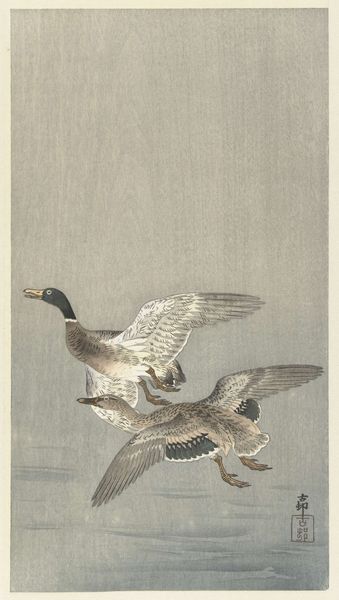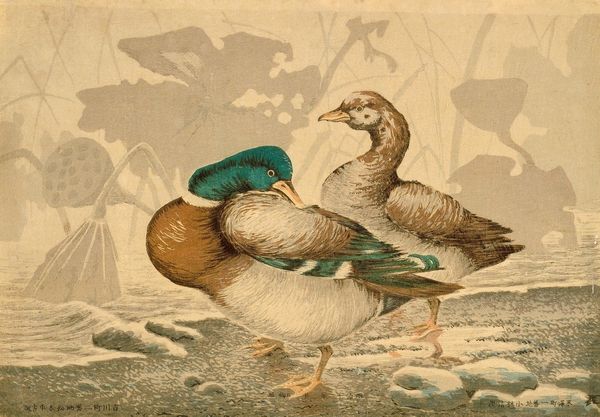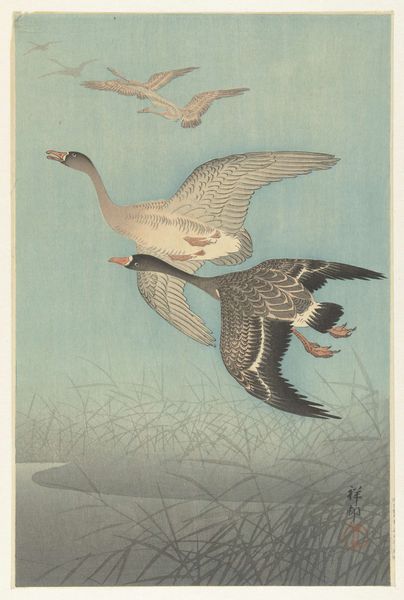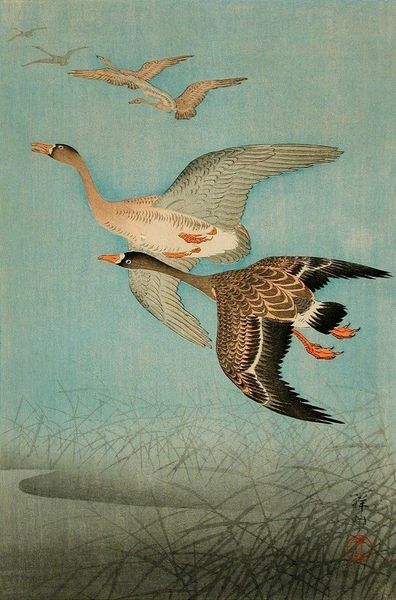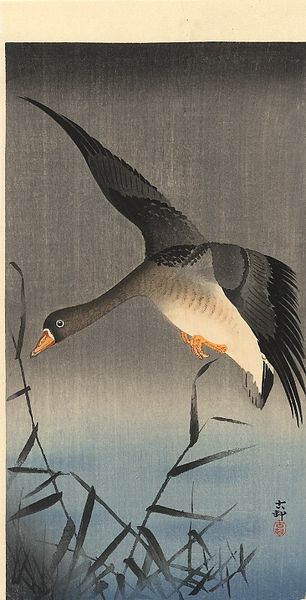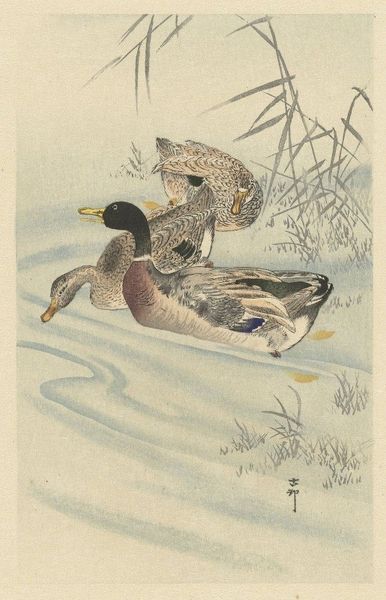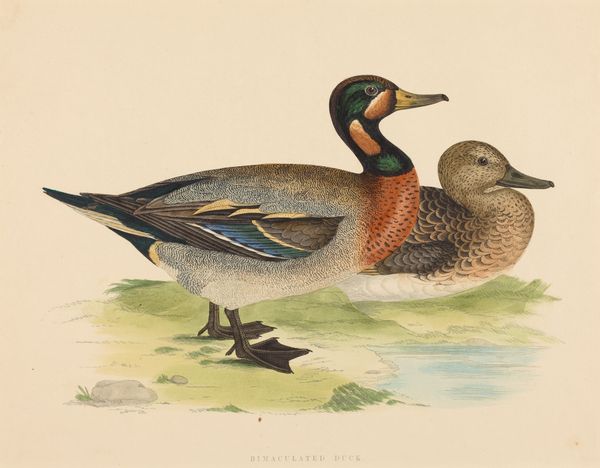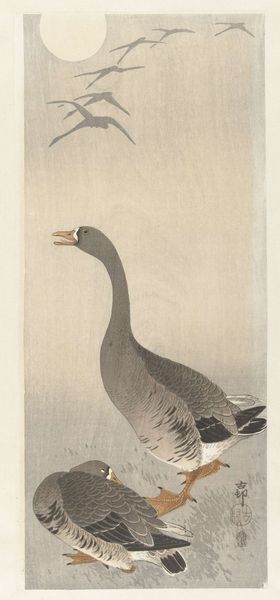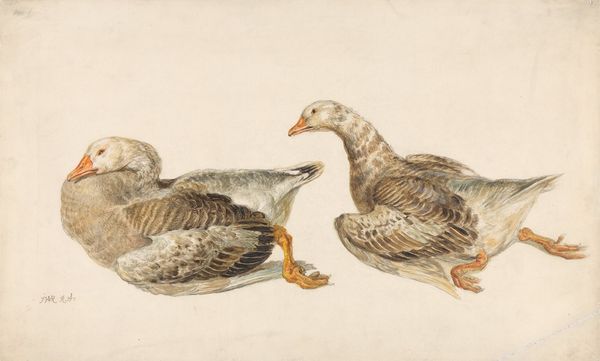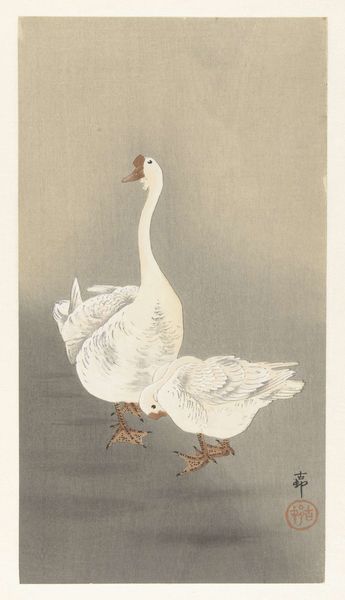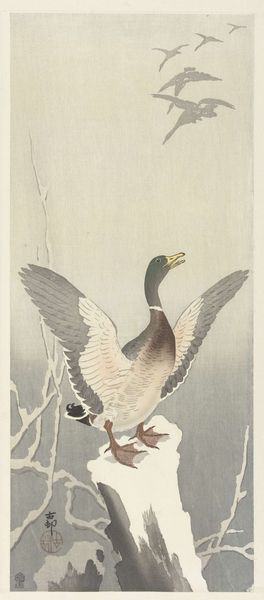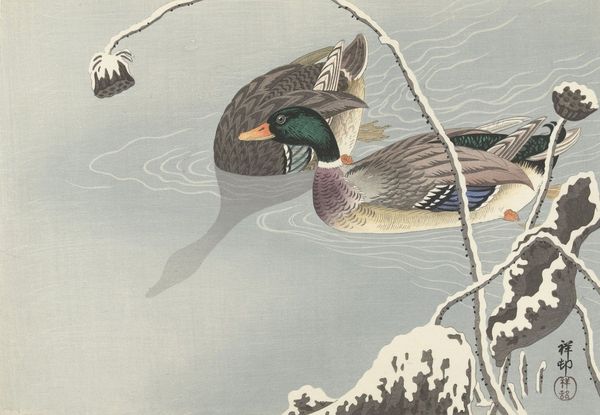
Copyright: Public domain
Curator: Let’s turn our attention to "Ducks," a 1920 watercolor print by Goyo Hashiguchi. Editor: My immediate impression is of serene domesticity. There's a calmness to the water, the simplified shapes of the ducks. It’s charming. Curator: Indeed. Hashiguchi, an important figure in the Shin-Hanga movement, directly engages with the Ukiyo-e tradition here. The printmaking process, the woodblock carving itself, mediates our access to the scene. These weren't mass-produced works like earlier Ukiyo-e, but rather crafted objects aimed at a more bourgeois, individual consumer. Editor: I see that connection to the Ukiyo-e tradition primarily in the depiction of nature and its simplified lines, which were made for widespread circulation as commodities—I'd imagine they resonated with ideas of harmony. Water and waterfowl have deep symbolism, representing purity, adaptability, but here they seem primarily concerned with everyday moments of peace. Curator: That contrast, between a commercial endeavor aiming to recreate “fine art,” and your emphasis on their potential spiritual impact on viewers interests me. Shin-Hanga was, in many ways, a response to both the commercialization of traditional Japanese prints *and* the increasing Western influence on art production and aesthetics in Japan at the time. So Hashiguchi's choices involved consciously adopting print as a means of reaching a consumer market while grappling with this shifting definition of high and low art. Editor: And isn't there inherent meaning in that material accessibility itself? To bring representations of tranquility to a broader audience seems to imbue these ducks with significance. The lily, too, signifies purity and enlightenment. They seem poised somewhere between our mundane reality and an idealized state of reflection. Curator: Absolutely, these pieces offered an opportunity to reflect and to connect with cultural values about beauty and nature during times of massive social change. Perhaps that quiet domesticity itself served as a subtle form of resistance or grounding amidst rapid modernization. Editor: Yes, precisely! It’s those enduring symbols, crafted through particular processes of labor, distribution, and cultural consumption that hold the image's most powerful impact, which may explain why these “Ducks” continue to charm viewers generations later. Curator: So, perhaps by focusing on both material processes *and* iconographic resonance, we appreciate "Ducks" not just as a picture but also as evidence of culture, commodification, labor and its complicated legacies.
Comments
No comments
Be the first to comment and join the conversation on the ultimate creative platform.

